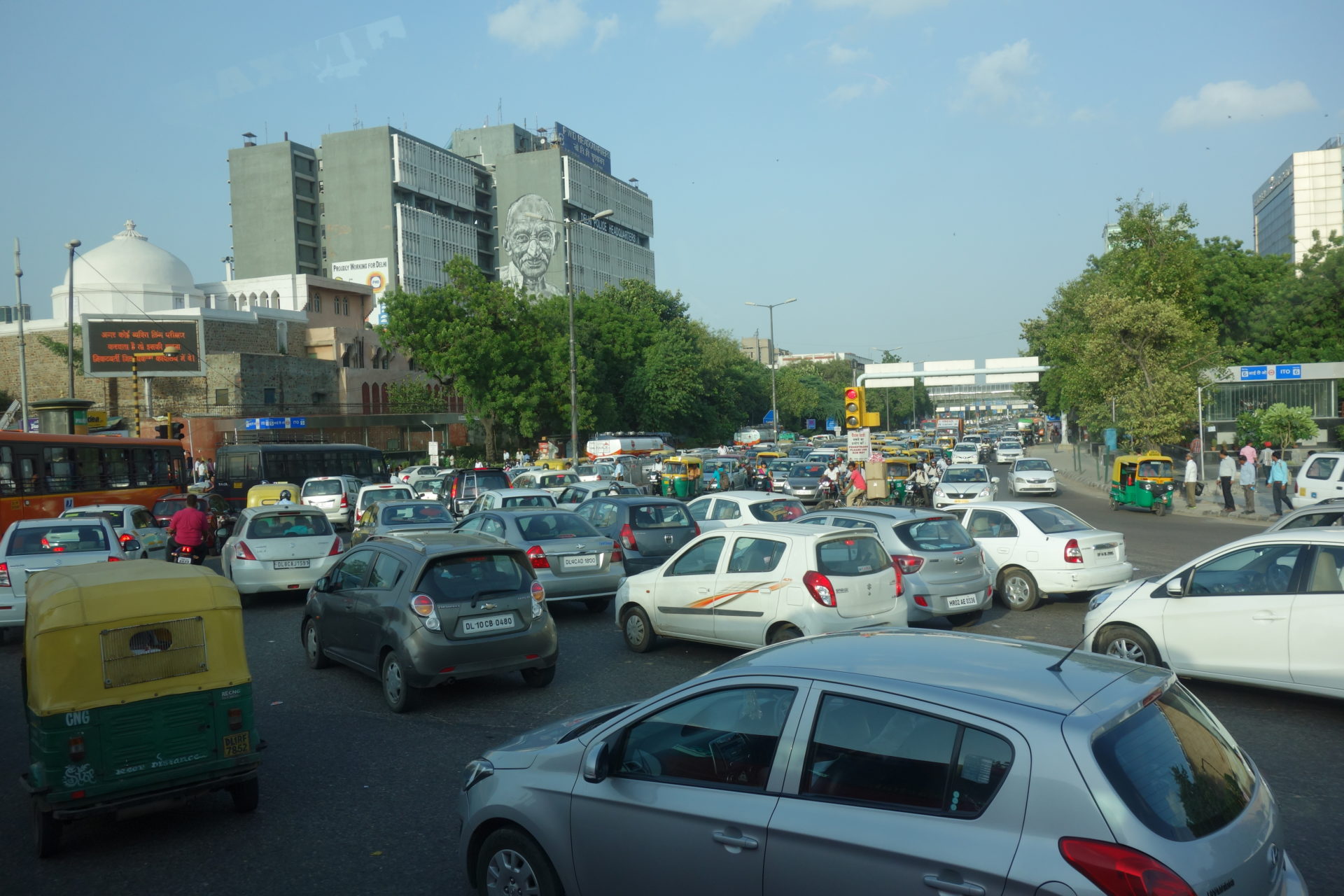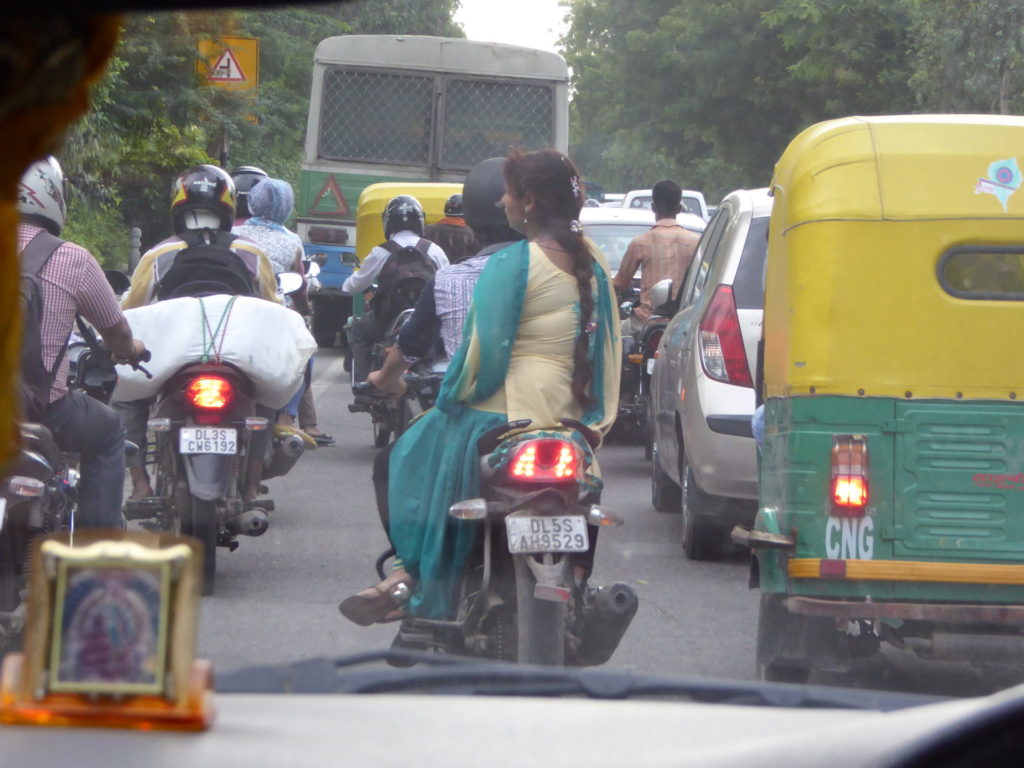5 rules that allow you to survive on Indian roads
If you land in India at the airport in one of the big Indian metropolises Delhi, Mumbai and Co., the first adventure will be the taxi ride to the hotel.
In the taxi itself, at least in the rear seats, there are no belts and the taxi driver, often still with one hand on the phone, steers smoothly through the dense traffic. Sometimes he overtakes from the left, sometimes from the right. Exactly where a suitable gap has opened up. And if there is no gap, it is vigorously blown the horn!

After all, at the rear of every Indian truck there is also the invitation to honk with “Blow Horn Please”.
Thus, a more or less musical horn concert can be heard from all directions. It becomes particularly intense when everything comes to a halt in a not infrequent traffic jam. Since there seems to be not much else to do, there is just honking.
Sometimes the sidewalk is dodged, sometimes the roundabout is shortened from the opposite direction, sometimes a red traffic light is run over. Zebra stripes, if there are any, are basically ignored.
Only the policeman with the whistle, who tries to regulate the traffic in the dense smog, is heard, otherwise a “Chalan” must be paid.
Blinkers are less used to indicate direction, but rather to indicate to other road users that they can overtake.

On the countless motorcycle bikes sit entire Indian families, with only the rider himself obliged to wear a helmet.
The trucks also transport not only goods, but entire human cargoes, which are pressed into each other.
And yet, one hardly dared to hope, the taxi finally comes to a safe stop in front of the hotel. Happy to have survived the chaotic ride, one staggers to the hotel entrance and pushes the driver perhaps a 10 rupees tip in the hand.

Yes, Indian road traffic is chaotic, irregular and dangerous for us.
In fact, smaller and larger collisions are not uncommon. Bumps and scrapes on the vehicles are boundless.
But as long as it is not a total damage, the vehicle keeps moving on and as long as all passengers are still healthy and cheerful, hardly anyone is bothered.
Really serious accidents don’t happen very often. The traffic is too dense and the overall speed is relativly slow. Maximum speed is often 80 km/h. Not because the Indians would be so disciplined, but rather because the bad roads and heavy traffic prevent faster driving. Often the vehicles are so old that it is already surprising, that it is still moving at all.
In India it is very common to hire a car along a with a driver. For us tourists that is a blessing, as these drivers are mostly very skillfull!
Driving a car in India offers many challenges and cannot be recommended. Not only because there is left-hand traffic here! The roads are often very narrow, parking spaces are barely recognizable and there is simply too much happening around you to ensure a safe way to get around.

But many tourists dare to use two-wheelers. Be it on a Royal Enfield tour through Rajasthan or over the highest pass roads in the world, by scooty from beach to beach in Goa or even by bicycle in the form of a multi-day bike tour through India. There are many tourists who move through India and survive it.
The really big challenges in Indian road traffic are only in the cities. There is a hustle and bustle here and you are lucky, if you have made it safely out to the rural environment. Then the roads become much emptier and the driving or cycling can be almost relaxed.
But even on the somewhat empty country roads there are (unwritten) rules that should be adhered to, otherwise there may be a nasty surprise here as well.
I present 5 road rules for India below:
-
Blow Horn Please

It is indeed the case, in India the horn is not only a warning signal, but is used as a universal instrument for all sorts of things. Especially for overtaking larger trucks, it is absolutely necessary. But even if you , meet an acquaintance, are annoyed by the traffic jam, drive into a curve, or want want to drive faster: The Horn will be blown.
-
Biggest First

He clearly is the boss of the road- by size
An important rule especially for us on two-wheelers: we are at the bottom of the traffic food chain and everyone else (except the poor pedestrians) are right above of us.
This rule is particularly important when it comes to the topic of priority! There is no such thing as main or side road, or right before left.
The kings of the road are the bus and lorry, then the larger passenger cars, followed by the small cars and then we come. Motorcyclist, moped rider, cyclist. And exactly in that order.
-
Bakshish

You don’t wear a helmet, you’ve driven too fast or you don’t have a driver’s license at all. Hmmm… But that’s not so good and certainly not if you get caught at a check!
Oh, but you’ve got a few 100 rupees with you? Make the policeman happy. He likes to put the 100 rupees in his pocket and then let you continue driving without a helmet and driver’s license.
-
Small village streets

India has an incredibly large road network, which has a connection to even the smallest village.
The larger highways and main roads are of course better developed and often the direct connection to the next destination, but they are also crowded, noisy and full of exhaust fumes.
It takes some time to put together a route on smaller roads, but that time is well invested.
Driving or riding on the much empty side roads is really fun. Often you are all alone on the streets, driving through small tranquil villages, meeting happy schoolchildren who run next to you and friendly old men waving at you.
The people are friendly and you can easily get in touch with them!
Nature is much more beautiful: palm forests, spice plantations, rice and wheat fields form picturesque backdrops, often with mountains or an ocean in the background.
And last but not least, you protect your lungs and your hearing!
-
Benefits of the senses
“Hearing sense” in the last section was already a good keyword, because in Indian road traffic the use of the sensory organs has a much higher meaning than traffic signs and rules.
In India you look and hear and then react to it. If a truck comes from the left of the side street, you wait. If you hear the honking car behind you, you drive to the side. If a fast vehicle with a light horn comes overtaking, you will slow down.
If you don’t know exactly how to react or, above all, how the other road user reacts, eye contact makes sense, so you can agree non-verbally and act accordingly.






